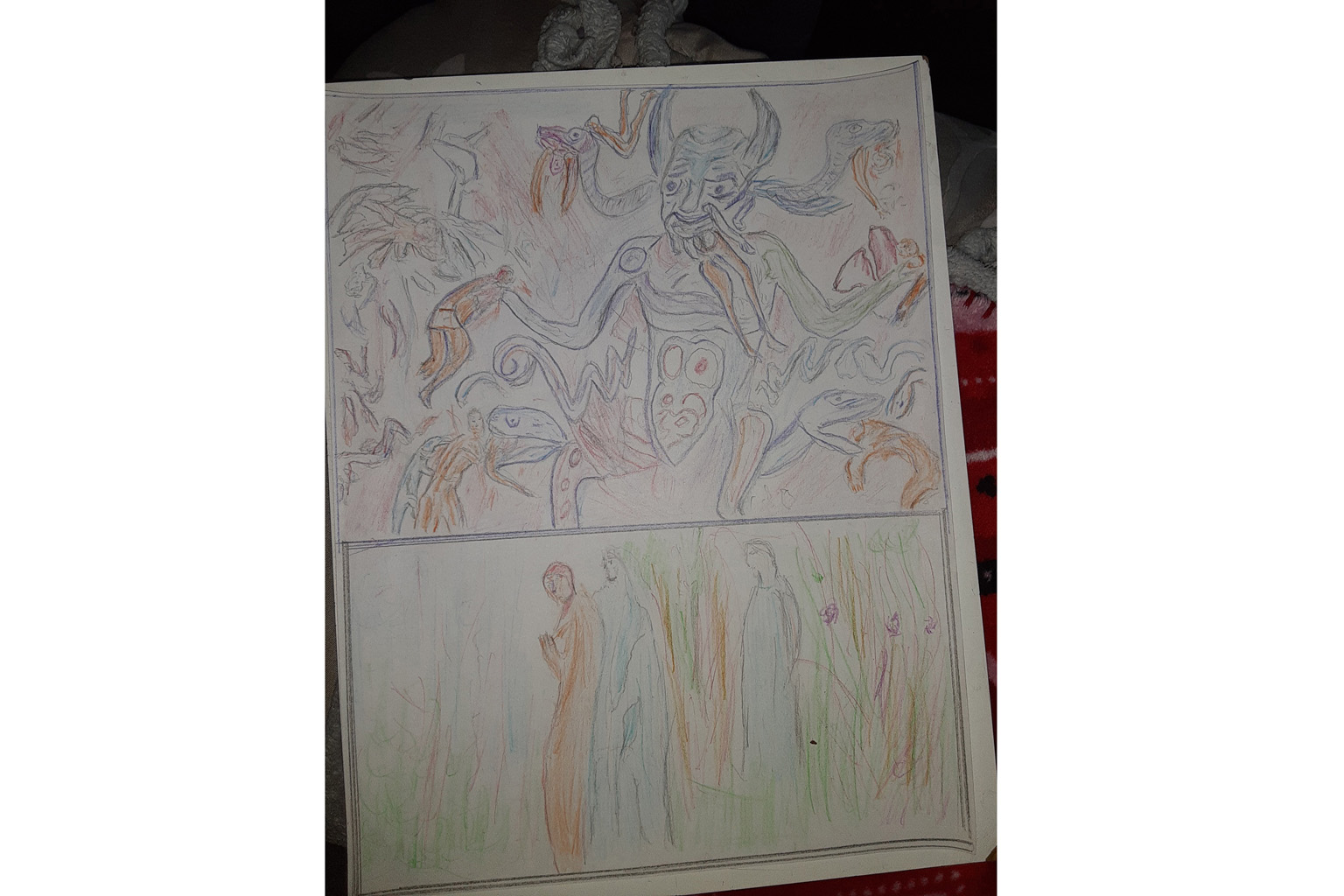Museums offer art therapy for troubled times
Sign up now: Get ST's newsletters delivered to your inbox

A drawing by Mr Walter Enriquez, who says art therapy helps him process emotions by capturing the past on paper.
PHOTO: WALTER ENRIQUEZ
Follow topic:
NEW YORK • When the instructor asked him to describe his life in two words, Mr Walter Enriquez chose carefully: fear and violence.
He had spent decades as a policeman in Peru during the bloodiest days of armed conflict between government forces and guerilla fighters, which killed nearly 70,000 people between 1980 and 2000.
But, he said, nothing could have prepared him for the extreme isolation and loneliness of quarantine.
Having lost a handful of his friends and neighbours to the coronavirus pandemic, the 75-year-old retiree has turned to art therapy programmes offered by the Queens Museum in New York to improve his mental health.
"We cannot go outside and enjoy our lives like before," Mr Enriquez said in Spanish, translated by his daughter. "But art helps us capture the past and relive positive experiences to get through pain and sadness."
For 30 minutes every Thursday, he fidgets with coloured pencils, pens and papers at a desk in his daughter's apartment in Richmond Hill, Queens.
With those tools, he creates scenes from his life based on prompts from his instructor: portraits of his mother and friends; images of Goyaesque, nightmarish demons representing disease that, when rendered on paper, feel less threatening.
Participants share their creations through Zoom, using their drawings and poetry - also part of the classes - to discuss life before and after the pandemic. Like thousands of older New Yorkers, Mr Enriquez recently learnt to use the Internet to connect with the outside world.
La Ventanita, one of the museum's initiatives in response to the coronavirus pandemic, gives him a chance to socialise with other Spanish speakers through guided art lessons about self-expression.
Mr Enriquez said the programme has revived his childhood aspiration of becoming a poet, through weekly prompts that ask him to create poetry based on his youth.
Although psychologists have long recognised the benefits of art therapy, which decades of scientific research suggests can improve moods and reduce pain, few American museums have devoted resources towards creating programmes.
But the demands of a grief-stricken public are now compelling cultural institutions around the country to create trauma-aware initiatives that put art collections and educators at the forefront of a mental-health crisis created by the pandemic, as well as the worldwide protests over police brutality and racism after Mr George Floyd's death.
Faced with plummeting revenue projections, industry leaders say they would not be surprised if museums turned towards art therapy for a new source of revenue or other funding opportunities.
"Art therapy is typically funded by insurers," said Ms Dina Schapiro, assistant chairman for the Pratt Institute's creative arts therapy department.
"You already have patrons coming into museums and paying a fee. It would be especially good for people who are resistant to the traditional venues of therapy, like an office."
Although it does not plan to charge fees for such programmes, the Metropolitan Museum of Art is looking to start art therapy initiatives.
It plans to reopen as a safe space for New Yorkers in much the same way it did after the Sept 11, 2001, terrorist attacks. Curators are beginning to think about how exhibitions can be designed as trauma-aware to avoid triggering visitors.
It has also prepared a running list of artworks to help visitors soothe their post-pandemic anxieties, including scenes of domestic tranquillity, such as Honore Daumier's The Laundress (1863); depictions of resilience, such as Faith Ringgold's Street Story Quilt (1985); and memorials to the dead, such as a fifth-century BC Greek grave stele of a little girl.
"Art has a therapeutic impact for everybody," said Ms Rebecca McGinnis, the museum's senior managing educator for accessibility.
"People will be coming to us after experiencing loss; some for whom the disease has permanently impacted their bodies. How can we continue to reflect all those human experiences?"
That museums are taking art therapy more seriously than ever is due in large part to a programme at the Montreal Museum of Fine Arts that lets physicians prescribe free access to its galleries.
The museum was one of the first in North America to hire a full-time art therapist in 2017.
Mr Stephen Legari, who took the job, normally sees about 1,200 participants each year, but demand for his services has increased as Montreal - the epicentre of Canada's coronavirus outbreak - reopens.
"In quarantine, you're looking at the same things in your apartment every day," he said. "The repetition is grinding down your capacity to concentrate. By contrast, museums are places for wonderment, beauty and awe."
NYTIMES

